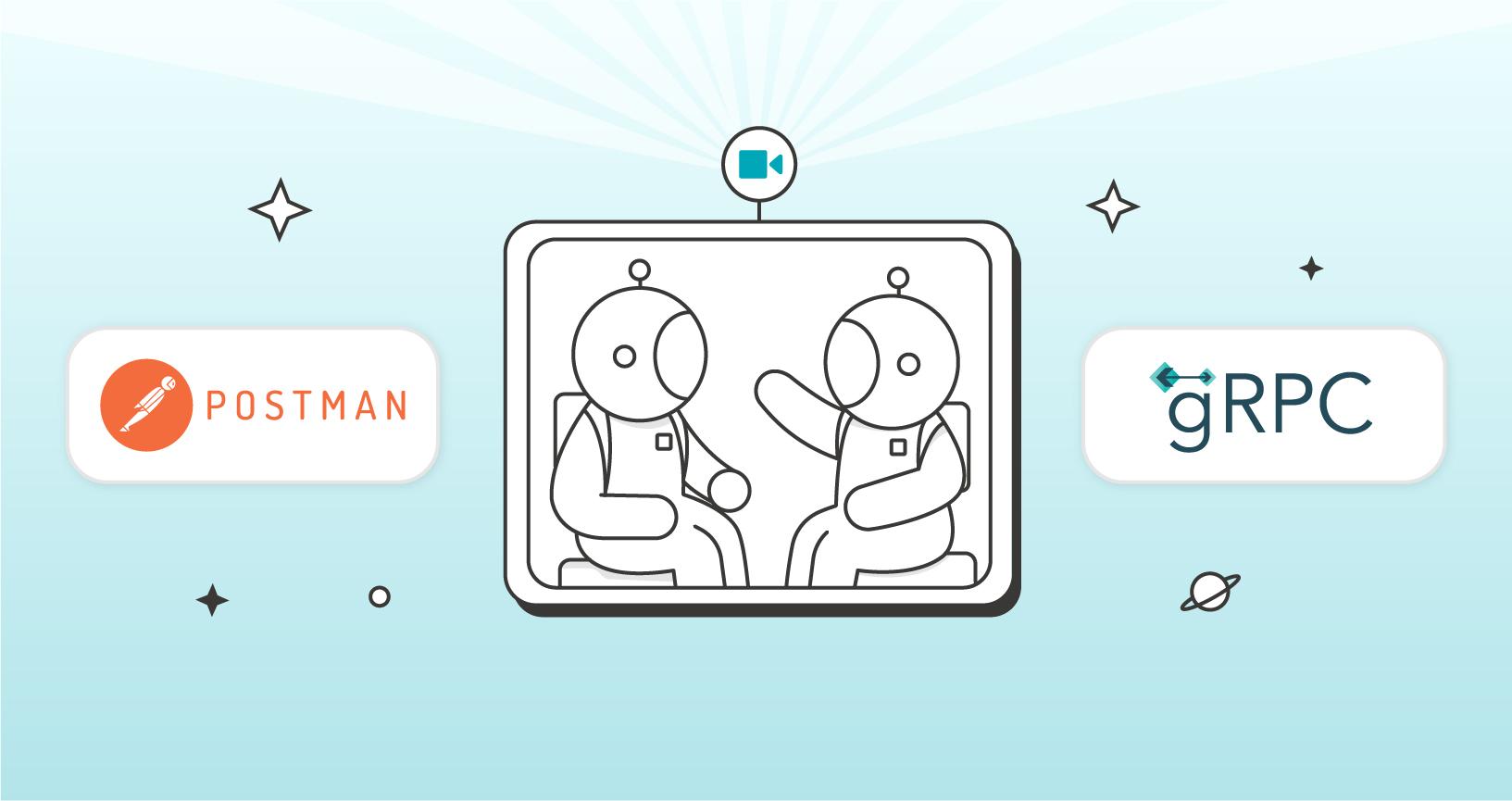How we built it: gRPC support
I recently invited some of our development team to a livestream event to discuss how Postman introduced gRPC support earlier this year. I got to speak with Postman Technical Lead Josh Wise and Postman Design Engineer Shobhit Katikia.
How is gRPC support different from HTTP-based APIs?
The gRPC protocol is a binary-only protocol that is heavily used in internal-facing microservices. It supports streamed data from the client or from the server, structured data payloads, or a combination of mixed streamed data and structured data at the same time. It is sought after for low-latency applications and high performance, and is more efficient than HTTP-based APIs.
Upcoming changes
Some of my favorite segments on livestream events are when I get to tell people about new product releases we’ve had over the past week or two. In this video with Josh and Shobhit, we actually got a sneak peek into an upcoming Postman release. Josh and Shobhit were able to demo some UI changes and discuss exciting changes to the API client, and they shared how adding gRPC support in Postman helped to redefine the direction of some of our engineering efforts.
Highlights
- What is gRPC?
- How do we use gRPC in Postman?
- You can design gRPC APIs in Postman, too
- How the team built the new mock server infrastructure
Sneak peeks
- Mock server support for gRPC and how it’s influencing more mock server changes in Postman
- Using “seed” data to regenerate “pseudo-random” content
Watch the full livestream
Learn more about gRPC support
If you’re excited to get started with gRPC, here are some links to documentation.
Upcoming livestreams
Postman currently streams every Thursday. Follow or subscribe on any of these platforms so you never miss hearing about streams like this one:
- YouTube: Subscribe to Postman on YouTube and turn on your notifications
- Twitch: Follow Postman on Twitch to receive notifications when we go live
- Twitter: Follow Postman on Twitter to see when we go live
- LinkedIn: Follow Postman on LinkedIn to be notified of upcoming events

Hi! This new feature is awesome! I wanted to ask you if you have plans of adding the capability of export gRPC collections, the same way we can do it with REST collections. So in case we need to have the collection we built in a local repository (outside the tool) we can. Thanks!